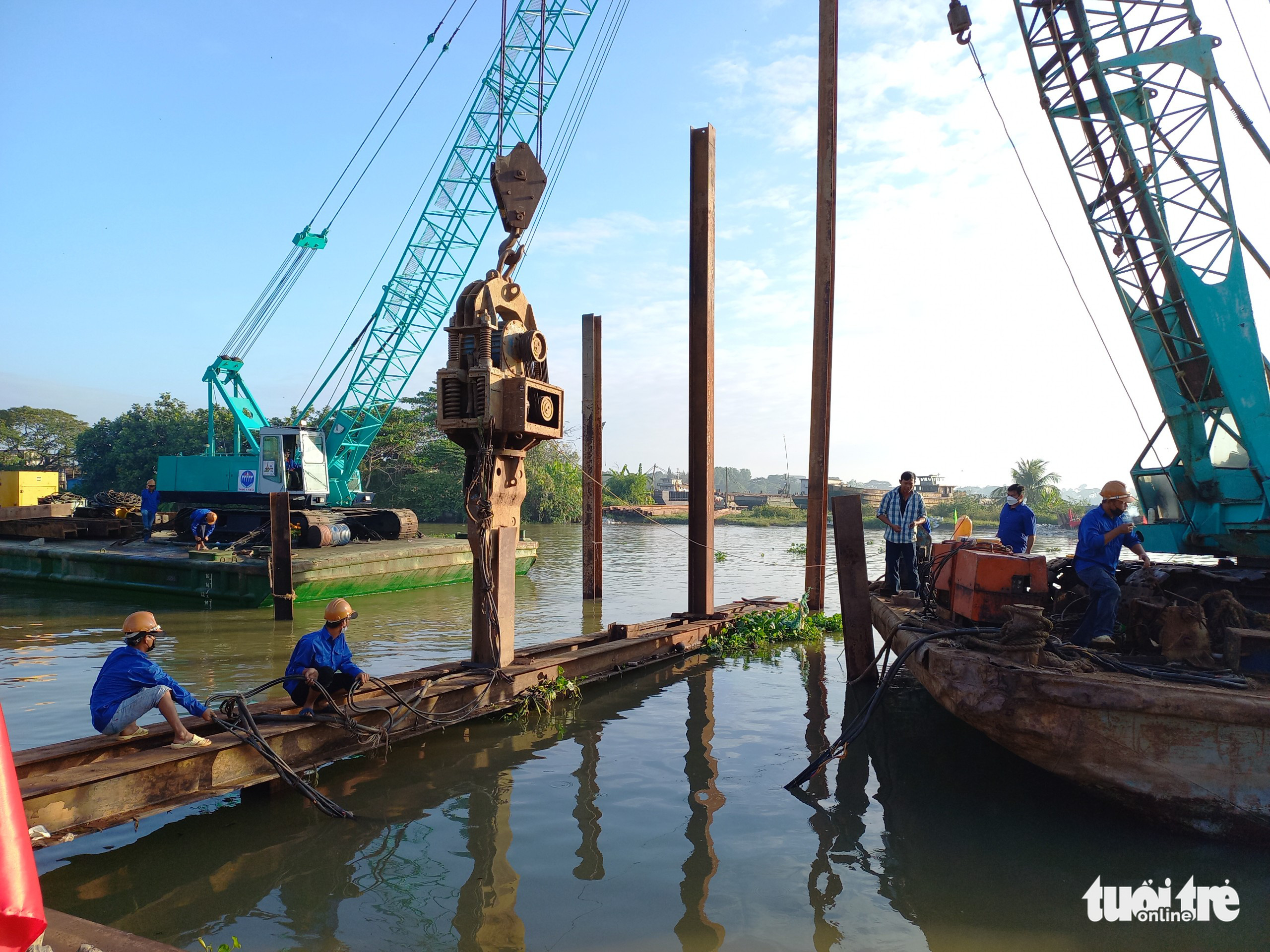Authorities and residents in Vietnam’s Mekong Delta have carried out necessary preparations to cope with this year’s saltwater intrusion, which has been affecting local rivers since the beginning of this month.
In the coastal districts of An Minh and An Bien in Kien Giang Province, salinity at local canals and rivers increased from 10 percent in January to about 15 percent a few days ago.
Trang Minh Tu, head of the bureau of agriculture and rural development in An Bien District, said that local authorities had started implementing response measures since mid-2021, including reinforcing sluices and embankments and storing freshwater.
Local residents had already harvested their paddy and switched to raising shrimps in their fields, Tu added.
Pham Tan Dao, an irrigation official in Soc Trang Province, predicted this year’s saltwater intrusion would be similar to that in 2021 and 2020.
“Farmers in susceptible areas in Long Phu and Tran De Districts have finished harvesting 40,000 hectares of rice paddy,” Dao continued.
There is still enough freshwater at local canals for residents to use and grow crops in the dry season, he added.
Local authorities have been operating irrigation sluices, investing in a pumping station, upgrading and repairing anti-saltwater sluices to cope with the weather phenomenon.
Salinity in the province is expected to peak at 19.8 percent along a section of the Hau (Back) River in Tran De District later this month.
Farmers are advised to closely monitor the situation to have a plan for effective freshwater usage.
In Tien Giang Province, competent authorities are constructing a VND10 billion (US$438,800) steel dam to prevent salinity and store freshwater for 1.1 million people and 128,000 hectares of crops.
The construction is expected to be complete by February 25.
If the situation gets worse, the province will consider putting into operation 17 existing drilled wells, according to Ung Hong Nghi, deputy director of the provincial Department of Agriculture and Rural Development.
In Ben Tre Province, multiple projects including the North-South Ben Tre irrigation system, Ba Lai sluice gate, and Kenh Lap reservoir have been implemented.
These projects have helped prevent saltwater intrusion and store freshwater in more than 194,000 hectares of land in the province, said Tran Ngoc Tam, chairman of the provincial People’s Committee.
In Hau Giang Province, about 150,000 hectares of paddy fields, fruit tree gardens, and aquaculture land are facing risks of drought and saltwater intrusion during this year’s dry season.
Residents in Long My District and Vi Thanh City may also experience water scarcity.
Agriculture authorities have provided directions to local units regarding the suitable operation of sluices in order to respond to all circumstances.
Like us on Facebook or follow us on Twitter to get the latest news about Vietnam!





















































